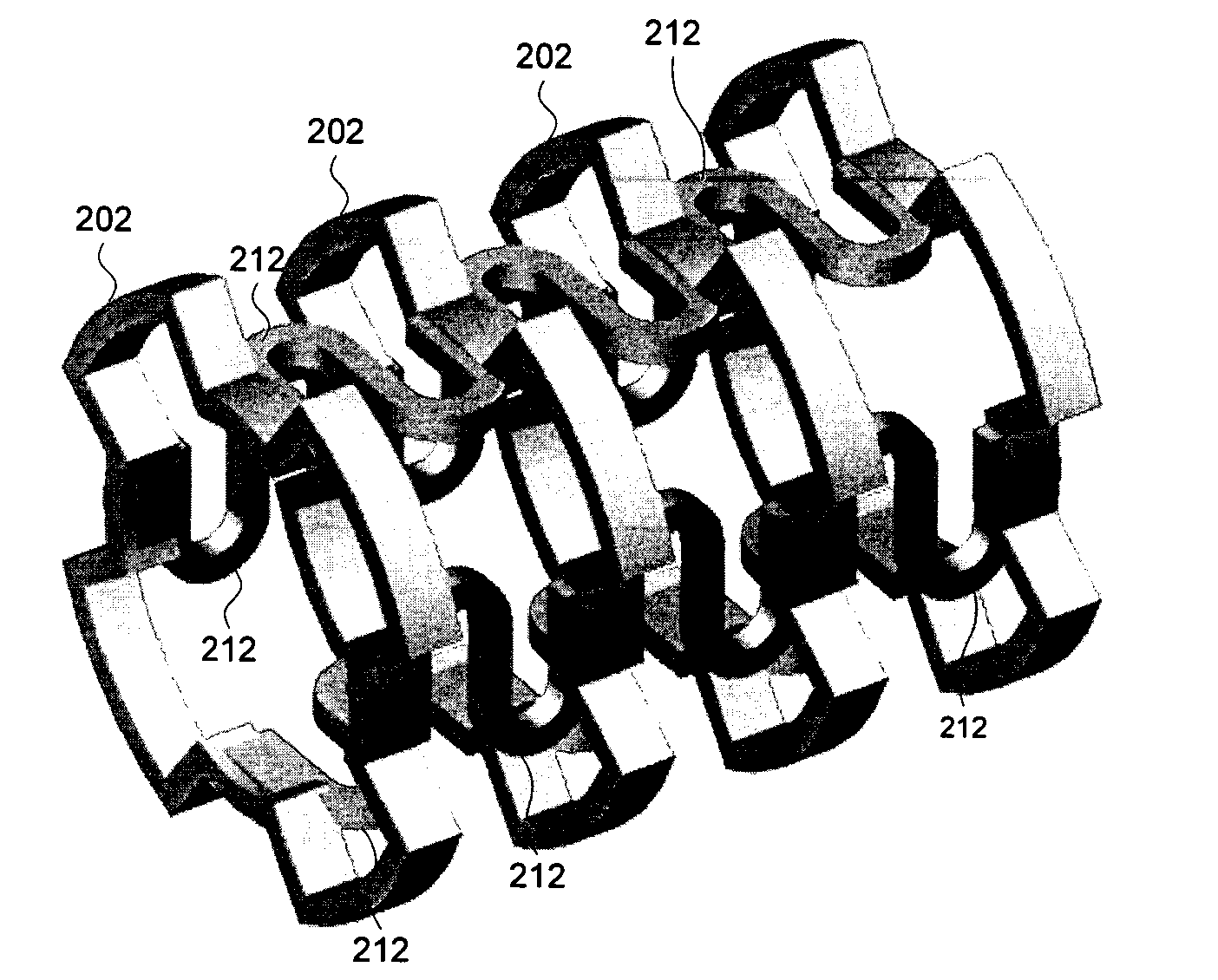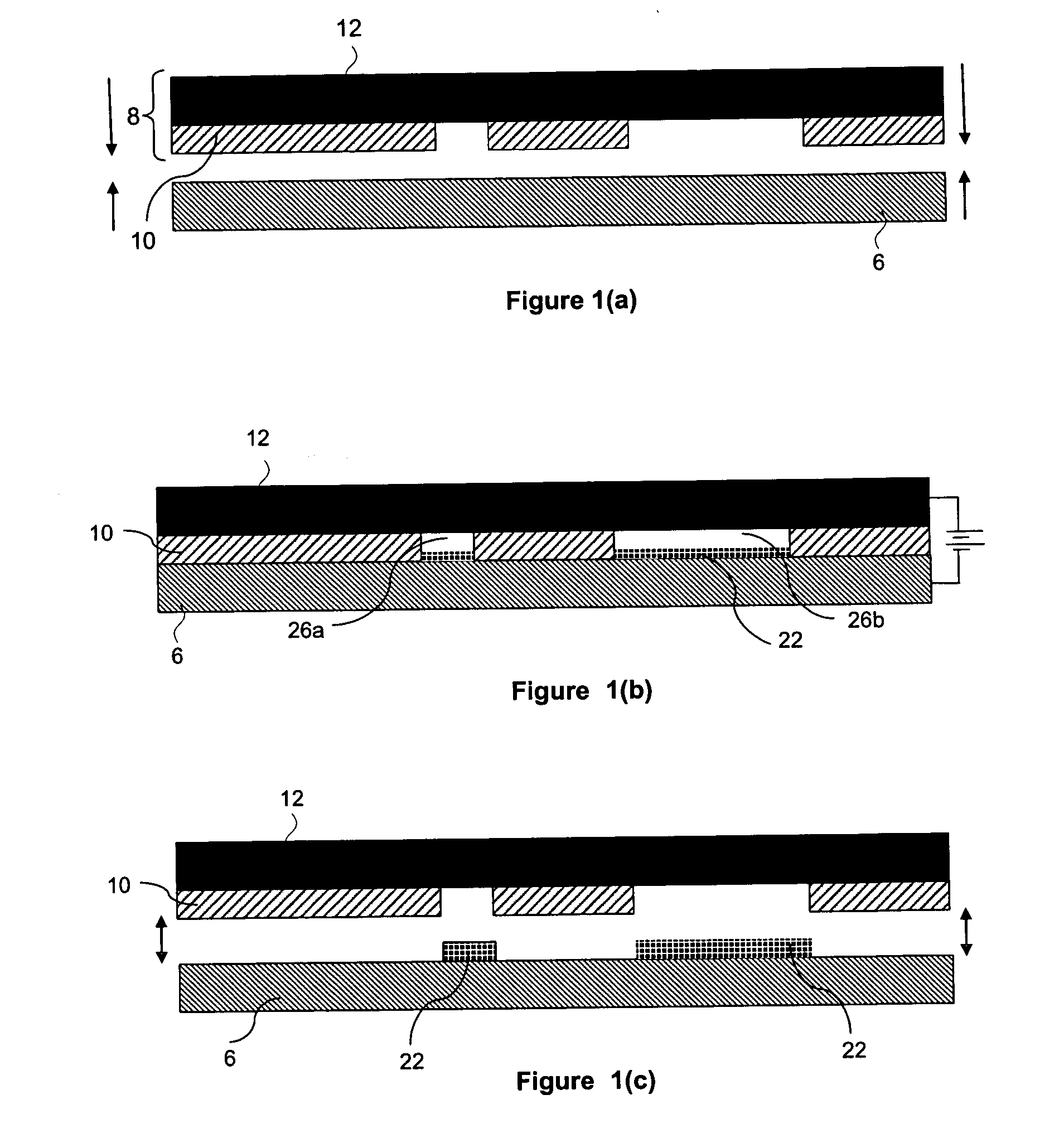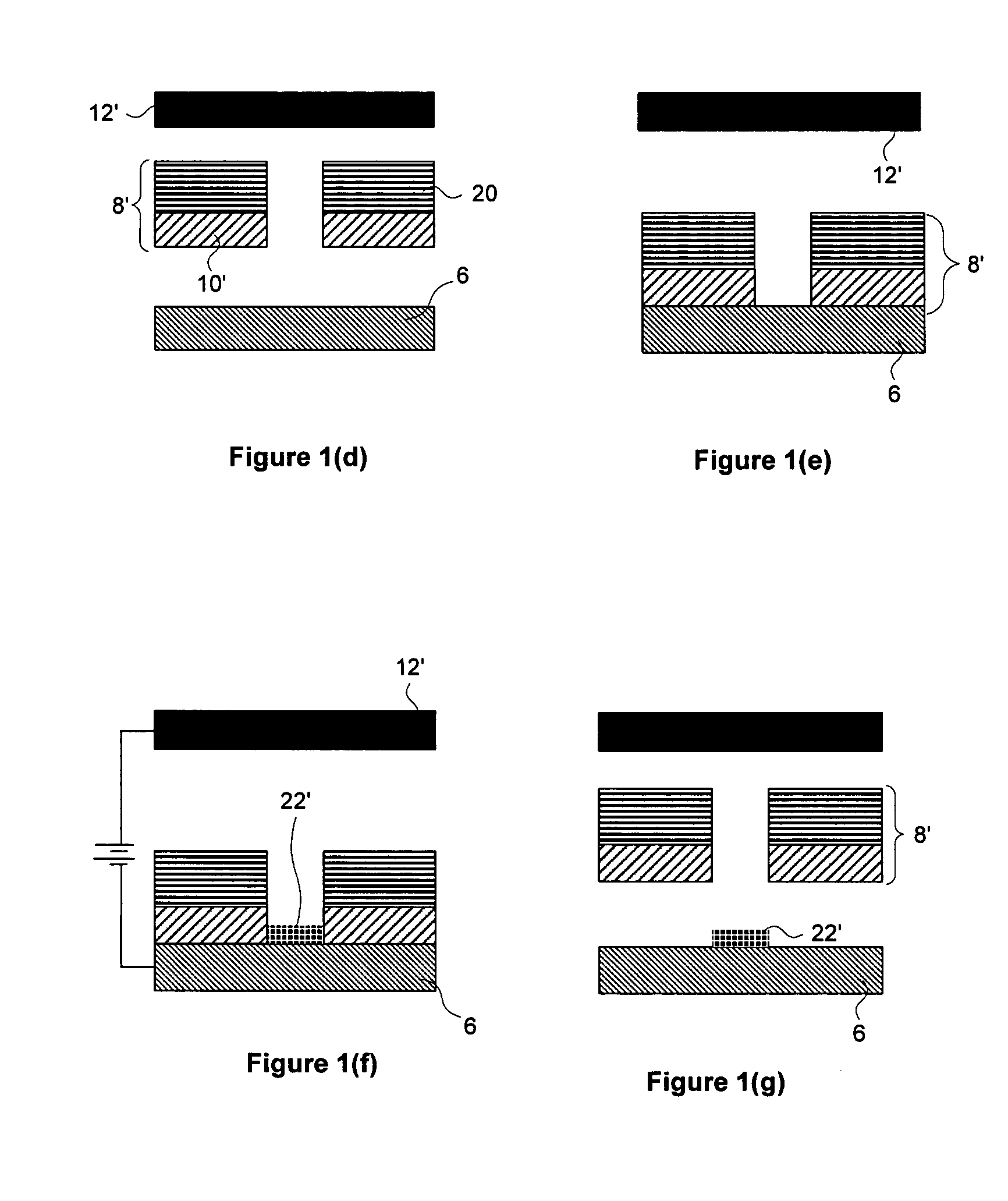Medical devices and EFAB methods and apparatus for producing them
a technology of medical devices and efab, applied in the field of miniature medical devices, can solve the problems of destroying the separation of masking materials from the substrate, and achieve the effect of reducing the risk of injury
- Summary
- Abstract
- Description
- Claims
- Application Information
AI Technical Summary
Benefits of technology
Problems solved by technology
Method used
Image
Examples
first embodiment
[0053] In a first embodiment a micro-tweezer or retriever is formed. The retriever is depicted in FIG. 5. The retriever includes a housing 152 with normally closed fingers 154 and 156. a control shaft 162 is located within housing 152 where it may have been formed. The shaft includes a tapered end element 164 that may be used to open normally closed fingers 154 and 156. When the tapered end element 164 is pulled in direction 168, relative to housing 152, contact between tapering surfaces 166 and 158 causes the fingers 154 and 156 to spread apart. Spring elements 172 resist surfaces 158 and 166 coming into contact and thereby cause surfaces 158 and 166 to separate when pressure along direction 168 is removed thus allowing normally closed fingers 154 and 156 to return to their gripping (i.e. closed) positions. Shaft 162 may be positioned within an extended housing that abuts the backend 178 of housing 152. During use, the extended housing may extend from the body of the patient and al...
second embodiment
[0056] In the invention an internally expandable stent is provided. In a preferred embodiment the stent includes a number of ring-like elements 202 where the ring-like elements include outer ring elements 204 and inner ring elements 206 connected by arms 208. The ring-like elements 202 are connected to adjacent ring-like elements with flexible S-shaped members 212. In the illustrated embodiment each ring-like member 202 is connected to an adjacent ring element 202 by four S-shaped members.
[0057] In alternative embodiments fewer S-shaped elements may be used. For example, two elements on opposite sides of each ring could be used or even one S-shaped element could be used to connect successive rings. In such embodiments, the S-shaped elements may all be located on the same side of successive rings or on opposite sides of successive rings or even in a spiraling pattern from along a chain of successive rings. In some embodiments the connecting members may extend from inner ring elements...
PUM
| Property | Measurement | Unit |
|---|---|---|
| width | aaaaa | aaaaa |
| width | aaaaa | aaaaa |
| three-dimensional structure | aaaaa | aaaaa |
Abstract
Description
Claims
Application Information
 Login to View More
Login to View More - R&D
- Intellectual Property
- Life Sciences
- Materials
- Tech Scout
- Unparalleled Data Quality
- Higher Quality Content
- 60% Fewer Hallucinations
Browse by: Latest US Patents, China's latest patents, Technical Efficacy Thesaurus, Application Domain, Technology Topic, Popular Technical Reports.
© 2025 PatSnap. All rights reserved.Legal|Privacy policy|Modern Slavery Act Transparency Statement|Sitemap|About US| Contact US: help@patsnap.com



